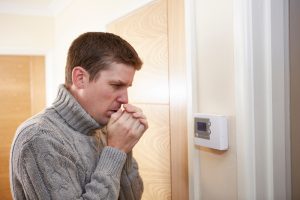Why have a central heating system for your home if it isn’t managing to heat all the living spaces? A heater like a furnace is installed into a house specifically to send sufficient heat to all the rooms for comfort.
If you’ve noticed at the start of winter that your furnace isn’t doing the job you expect from it, leaving some rooms too cold, then you’ve got a problem that needs attention. It might be only a simple issue you can correct with troubleshooting. Or it might be a bigger malfunction that will require calling our technicians for heating repairs in Minneapolis, MN or elsewhere in the Twin Cities. We’re going to look at what might be causing your furnace’s uneven heating trouble and what steps to take.
Is this a new furnace?
We ask this upfront because if this is the first time you’ve used this furnace, then one possibility for its poor performance is that it was incorrectly installed. To properly heat a house, the technicians who install the furnace need to size it so its heating capacity matches the requirements of the home. If the technicians did a sloppy installation (often because they’re amateurs or doing rush jobs to make more money), they may put in an undersized furnace.
The only way to correct this is to have the furnace replaced—and make sure you have experienced professionals like ours do the work. We’re thorough and precise in all our installations.
Clogged air filters
When you encounter any performance issue with your furnace, it’s always a good idea to check on the air filter for the unit to see if it’s extremely dirty. A clogged filter restricts airflow into the furnace, lowering the volume of air that gets heated and then sent to the rooms. Put in a clean filter to see if this fixes the problem—and make sure to continue to change the filter every 1–3 months.
Faulty thermostat
The thermostat in your house may be sensing incorrect temperatures or sending wrong signals to the furnace about when to turn on and off. If the thermostat is regularly shutting off the furnace too early, there won’t be enough time for heat to reach all the rooms. You’ll need professionals to recalibrate, repair, or replace the thermostat.
Short-cycling
This is when the furnace keeps turning off before completing its full heating cycle, then turning back on again a short time later. Short-cycling puts immense wear and tear on a furnace’s components, and it also makes it harder for the furnace to put out enough heat to warm up the whole house. HVAC technicians must inspect the furnace to see what’s causing short-cycling.
Leaky ductwork
The ducts in your home may have air leaks allowing the heated air from the furnace to escape and never reach their destinations. This will affect certain rooms, making them colder because they’re getting less heated air. You must have professionals test your ducts and then seal any leaks.
Furnace age
Is your gas furnace more than 15 years old? More than 20? If so, this uneven heating may be a warning that the furnace is starting to die. Although repairs may get it working for a bit longer, this is the point where it’s best to channel resources toward a new furnace.

